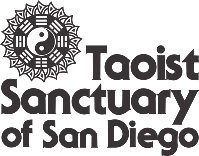Tuina – Chinese Medical Massage
Tui Na is the oldest known system of massage. Originating in China, it is recorded in the Yellow Emperor’s Classic of Internal Medicine since 2300 B.C. as one of the five major therapies of the time. Tui Na has remained an organized and systematically developed system of massage since that time. Currently in China Tui Na is taught as a separate, but equal field of study in the major traditional Chinese medical colleges. Tui Na doctors receive the same demanding training as acupuncturists and herbalists and enjoy the same level of professional respect.
Tui Na uses the Traditional Chinese Medical theory of channels and collaterals (meridians or pathways) and the flow of the Qi energy as its basic therapeutic orientation. Through the application of massage and manipulation techniques, Tui Na seeks to establish a more harmonious Qi energy through the system of channels and collaterals, allowing the body to naturally heal itself. Tui Na methods include the use of hand and arm techniques to massage the soft tissue (muscles and tendons) of the body, stimulation of acupressure points to directly affect the flow of Qi energy through the system of channels and collaterals, and manipulation techniques to realign the musculo-skeletal and ligamentous relationships (bone setting). External herbal poultices, compresses, liniments and salves are also used to enhance the other therapeutic methods.
Tui Na has a variety of different systems that emphasize particular aspects of these therapeutic principles. The main schools in China include the rolling method school which emphasizes soft tissue techniques and specializes in joint injuries and muscle sprains, the one finger pushing method school which emphasizes techniques for acupressure and the treatment of internal diseases, the Nei Gung method school which emphasizes the use of Nei Gung Qi generation exercises and specific massage methods for revitalizing depleted energy systems, and the bone setting methods school which emphasizes manipulation methods to realign the musculo-skeletal and ligamentous relationships and specializes in joint injuries and nerve pain. In addition to these four main schools, there are hundreds of “family systems” that have been passed on from generation to generation and utilize aspects of each major system.
Tui Na is now being popularized in this country as a powerful therapeutic extension of traditional western massage methods. It was originally introduced to the public by Taoist Master Share K. Lew at the Taoist Sanctuary in North Hollywood in 1975, when he began to teach the Taoist Elixer style (Tao Tan Pai) of Tui Na massage. In the early 1980’s Bob and Honora Flaws began Tui Na training groups in China and since then Tui Na has been emerging in oriental medical schools and massage schools around the country. Pacific College of Oriental Medicine, the International School of Professional Bodywork, and the Taoist Sanctuaries of San Diego and Los Angeles are teaching Tui Na massage in traditional and scholastic formats. Tui Na’s simplicity and focus upon specific problems, rather than a more generalized treatment, makes it both an excellent alternative and/or extension of Swedish-style massage. By utilizing treatments of shorter duration, it can be used in a variety of settings, including home, office, clinic or hospital. It is well suited for both the professional massage therapist or the active, health conscious individual. Tui Na massage has proven over the centuries that it is an effective therapeutic tool while its theory and accomplishments are well documented. The best way to learn about Tui Na massage is to experience its benefits and pleasure for yourself.
Read more
Uses of Tuina
Energetics of Hand Techniques
Tuina for treatment of post surgical adhesions
Tuina for side effects of cancer treatment
